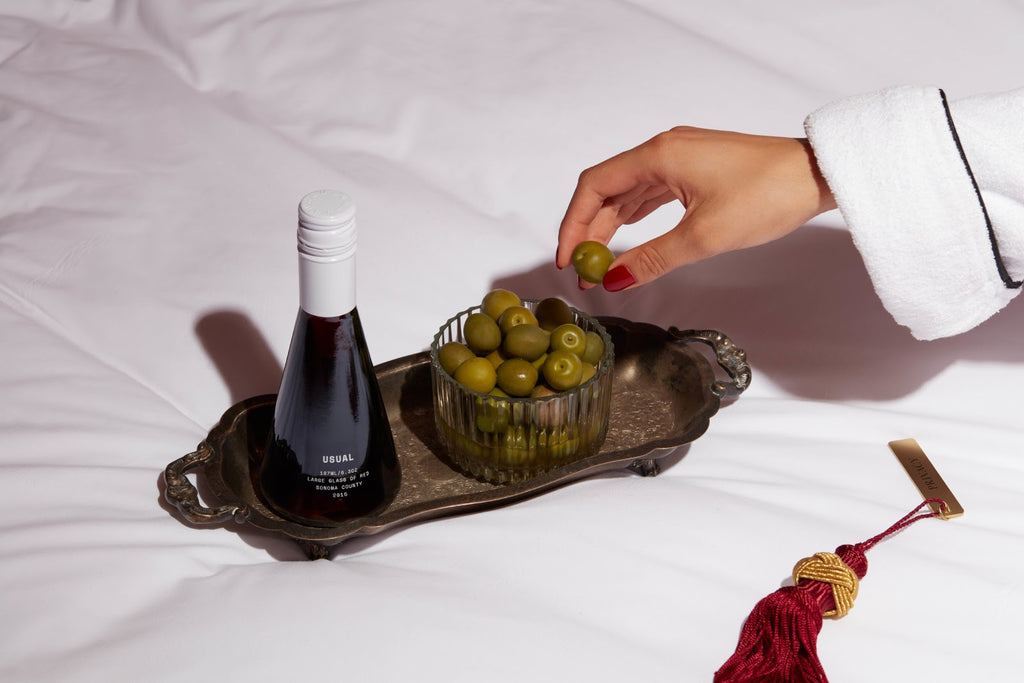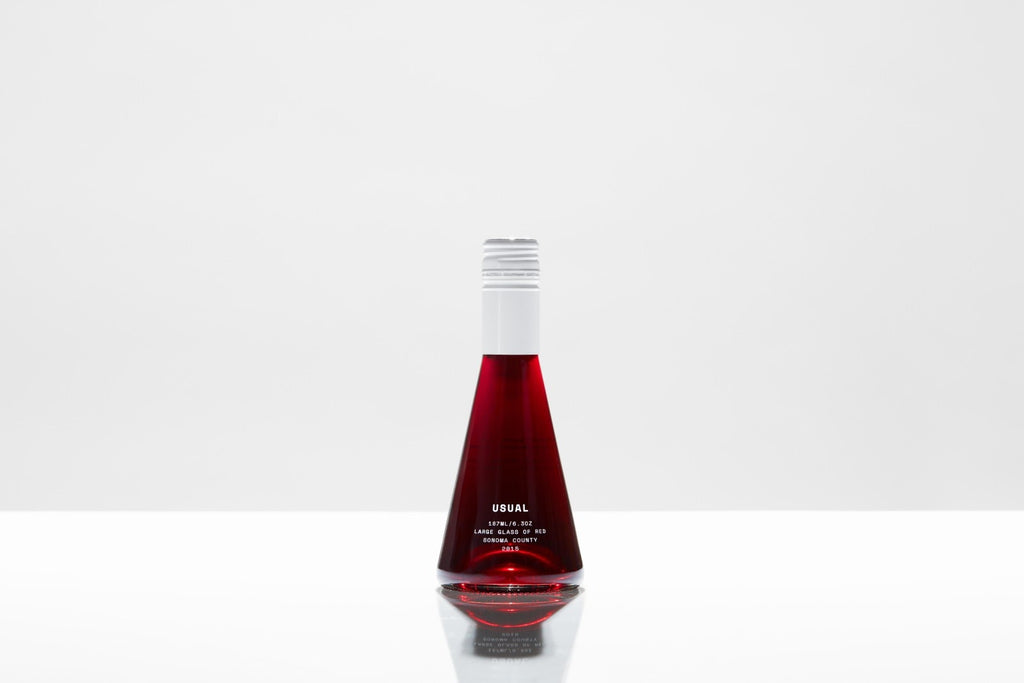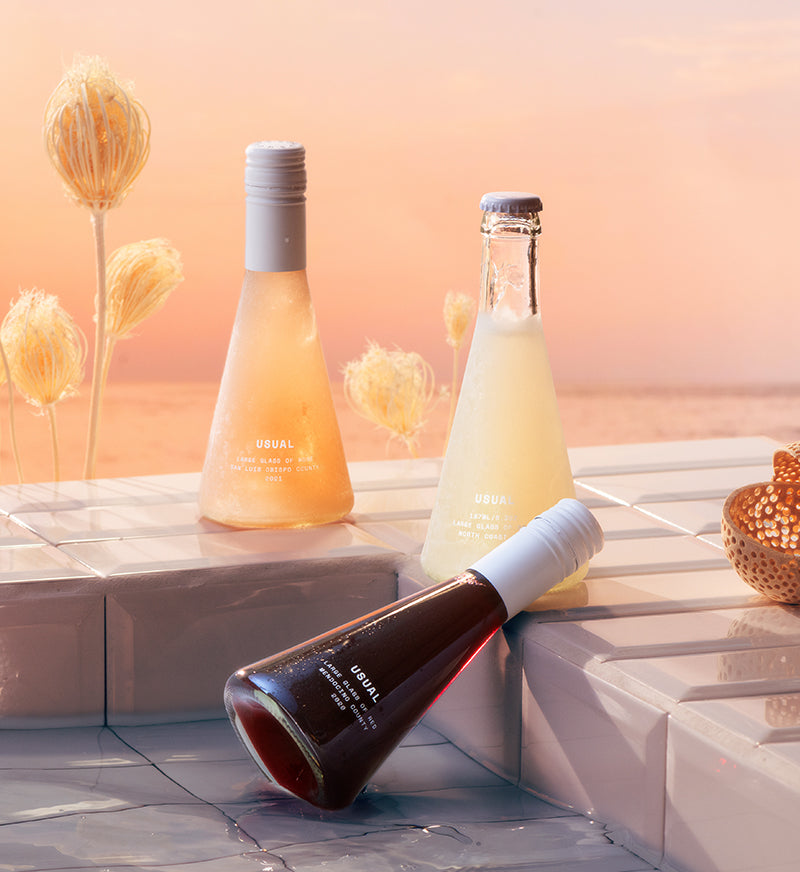Your cart looks a little empty!
Continue Shopping
Red vs. White Wine: Which Is the Best Choice for You?
McKenzie Hagan |
In the great debate of red wine vs white wine, which one reigns supreme? Well, there's not a single answer, as it truly depends on your personal taste and preferences.
Although red and white wines share many similarities, they also possess significant differences. Both are products of grape fermentation, but key variations in this process exist.
For red wine fermentation, winemakers leave the red grape skins on — imparting red wine its distinct ruby hue. In the making of white wine vs red wine, the former undergoes a unique process where the grape skins are crushed and removed, resulting in a clear grape juice.
Interestingly, there's a difference in the aging process between red wine vs white wine. The majority of white wines mature in cast iron vessels, while red wine finds its home in oak barrels. These porous vessels allow oxygen into the wine, smoothing out the acidity. The porous nature of these barrels allows oxygen to seep into the wine, smoothing out the acidity and modifying the wine's texture — a factor that significantly impacts the drinking experience.
Red and white wine have diverse food pairings, require different storage conditions, and may even vary in their health implications.
In this article, we delve into each type of wine to help you make the best choice based on your palate.
Red Wine vs White Wine: Health Benefits
Whether you’re looking for a low-sugar wine for medical or lifestyle reasons, white wine is the best choice.
For those pondering white wine vs red wine from a health perspective, it's important to know that dry white wines are naturally lower in sugar than their red counterparts, making them ideal if you have diabetes, follow the keto diet, or simply aim to reduce your sugar intake.
Among white wines, Brut stands out. This sparkling, bone-dry white wine delivers a crisp and refreshing experience. Usual Wines Brut, in particular, is crafted with white grapes from award-winning vineyards in Napa and Sonoma, offering notes of fresh citrus and elderflower.
However, in the context of red wine vs white wine, it's worth noting that red wine isn't devoid of its health benefits. Although it has a naturally higher sugar content, red wine is rich in the antioxidant resveratrol. research has demonstrated that this component can potentially boost levels of “good” cholesterol and reduce levels of “bad” cholesterol. Furthermore, red wine resveratrol is also associated with improved blood vessel function.
So, when it comes to the battle between red vs. white wine, the winner depends on your personal health situation.
Red Wine vs White Wine: Food Pairings

Food pairings can significantly influence your opinion of a bottle of wine. An incompatible pairing can overshadow the wine’s subtle flavors, making it taste bland and lackluster.
In the grand match of red wine vs white wine for food pairing supremacy, it's key to consider that red wine typically complements rich, fatty meats like hamburgers, ribs, pork chops, and lamb, while white wine may be more compatible with lighter fare.
However, if you’re not a big red meat eater, in the white wine vs red wine debate, the former may serve as a better accompaniment for your meals.
For example, spicy food is especially difficult to pair — the intense spice can mask the wine’s subtle flavors and make it taste flat and flabby. However, fatty meats such as hamburgers, ribs, pork chops, and lamb pair easily with red wine. This goes for a range of different red wine styles.
Here are some red wine food pairing ideas:
Pinot Noir is a low-tannin red wine that pairs beautifully with roast pork and duck.
Barolo is a rich, full-bodied red wine that perfectly cuts through fatty meats, such as rump roast.
Cabernet Sauvignon is another full-bodied, high-tannin wine. You can’t go wrong pairing it with steak dinners.
However, if you’re not a big red meat eater, white wine may be a better option for you.
Great white wine food pairings include:
Chardonnay is one white wine that can be oak-aged like red wine, thus imbuing it with nutty and savory notes. It pairs wonderfully with white meat, such as chicken, turkey, and salmon.
Sauvignon Blanc is a crisp and refreshing white wine. Because of its sharp flavors, it pairs perfectly with a range of cheeses, oysters, and green vegetables.
Riesling differs greatly depending on where the grapes are grown. For instance, some rieslings are tooth-achingly sweet, while others are super dry. For a dry riesling, pair with light poultry or sushi. For the sweeter end of the scale, try it with blue cheese or apple pie.
Red Wine vs White Wine: Tannins

Because red wine is fermented with the grape skins intact, a glass of red wine has a far higher tannin level than a glass of white wine. Tannins are naturally occurring compounds that are found in plants — especially fruit skins, leaves, and seeds.
You can tell if a glass of wine is high in tannins as it will leave a drying sensation on the back of your tongue after sipping. While white wines can have this effect too, it occurs most often with red wines. Syrah, and Malbec, and Cabernet Sauvignon taste especially tannic.
Some people enjoy this intense drinking experience, but it’s not for everyone. If you prefer a lighter mouth sensation, consider a low-tannin red wine, such as Pinot Noir, or stick to white wine.
Although it’s rare, some people are sensitive to tannins. Tannin sensitivity can cause headaches, migraines, and stomach pains. If you have any of these symptoms after a night on the red, try switching to white and see if there is any difference.
When you're weighing red wine vs white wine, one cannot overlook the topic of tannins. These naturally occurring compounds found in plant skins, leaves, and seeds contribute a distinct mouthfeel to the wines. Red wines, due to their grape-skin fermentation process, possess a higher tannin level compared to white wines.
Choose Red Wine If … You Absolutely Love Berries

It’s hard to generalize what wine tastes like — flavors can range from pineapple to grass to gasoline (seriously!). But for those who love anything berry flavored, red wine is probably the best bet.
While it's common to detect notes of citrus, elderflower, and passionfruit in a glass of white wine, berries are a common red wine flavor.
Light-bodied reds often invoke flavors of strawberries, raspberries, and cherries. With richer, fuller-bodied reds, you’re likely to taste blackberries, blueberries, and blackcurrants.
Of course, this isn’t true for all red wines. Certain heavy wines take on more savory flavors, such as tobacco, leather, and black pepper. However, if you love strong, berry-heavy flavors and aromas, chances are you’ll find a red wine you love.
White Wine vs Red Wine: If You Love Citrus Flavors
White wine flavors are often crisper than those of red wines. Think citrus, freshly cut grass, stone fruits, and aromatic hints of floral. If you gravitate towards sharper flavors, white wine might be the one for you.
Furthermore, if you prefer your drinks a little colder — a refreshing summer glass, perhaps? — white wines are an ideal choice. To discover more about proper wine storage and serving, check out our guide on wine temperature.
Who Wins the Red Wine vs White Wine Battle?
As you can see, there are plenty of factors to consider when making a choice between white and red wine.
All said and done, the winner of the red wine vs white wine debate depends entirely on personal preferences. The world of wine is incredibly diverse and offers something for everyone's taste.
While red wine has its own health benefits, such as links to lowering cholesterol, dry white wine is an excellent choice for those looking to lower their sugar intake.
White wine is also lower in tannins, meaning those who don’t enjoy the drying effect of highly tannic drinks, or those with tannin sensitivity should choose white wine over red.
By contrast, red meat lovers would be wise to fill their wine cellar with a good selection of red wine, due to its wonderful food pairing qualities. On the other hand, vegetarians and vegans may find it easier to pair white wine with their meal choices.
If you gravitate towards sharp, fresh, citrusy flavors, you’ll likely find many white wines to enjoy. If you can’t resist raspberries, strawberries, and blackberries, there are plenty of red wines that will satisfy your berry-lust.
All that said, take this advice with a pinch of salt. There are so many wonderful wine options on the market, there’s no reason to limit yourself. Treat yourself to a range of different wines (including rosé). You may be surprised by what takes your fancy.
Share
